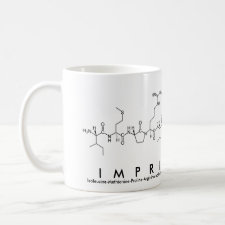
Authors: Ferey L, Delaunay N, Rutledge DN, Huertas A, Raoul Y, Gareil P, Vial J
Article Title: Use of response surface methodology to optimize the simultaneous separation of eight polycyclic aromatic hydrocarbons by capillary zone electrophoresis with laser-induced fluorescence detection.
Publication date: 2013
Journal: Journal of Chromatography A
Volume: 1302
Page numbers: 181-190.
DOI: 10.1016/j.chroma.2013.06.027
Alternative URL: http://www.sciencedirect.com/science/article/pii/S0021967313009229
Abstract: Polycyclic aromatic hydrocarbons (PAHs) are among the most targeted contaminants by international regulatory institutions. There is thus a need for fast, selective and sensitive analytical methods to quantify these compounds at trace levels in complex samples. This article focuses on the optimization by means of an experimental design of a CE method with laser-induced fluorescence detection for the fast simultaneous separation of 8 heavy PAHs among food and environmental priority pollutants: benzo(a)pyrene, benzo(a)anthracene, chrysene, benzo(b)fluoranthene, dibenzo(a,h)anthracene, indeno(1,2,3-cd)pyrene, benzo(k)fluoranthene, and benzo(ghi)perylene. In this method, capillary zone electrophoresis with a mixture of an anionic sulfobutyl ether-β-cyclodextrin (SBE-β-CD) and a neutral methyl-β-cyclodextrin (Me-β-CD) was used to separate PAHs, on the basis of their differential distribution between the two CDs. First, the factors most affecting PAH electrophoretic behavior were identified: SBE-β-CD and Me-β-CD concentrations and percentage of methanol added to the background electrolyte. Then, a response surface strategy using a central composite design was carried out to model the effects of the selected factors on the normalized migration times. To optimize the separation, desirability functions were applied on modeled responses: normalized migration time differences between peak end and peak start of two consecutive peaks, and overall analysis time. From the model, predicted optimum conditions were experimentally validated and full resolution of all 8 PAHs was achieved in less than 7 min using a borate buffer composed of 5.3 mM SBE-β-CD, 21.5 mM Me-β-CD and 10.3% MeOH. This CE separation method was successfully applied to real edible oil analysis
Template and target information: benzo(a)pyrene, benzo(a)anthracene, chrysene, benzo(b)fluoranthene, dibenzo(a,h)anthracene, indeno(1,2,3-cd)pyrene, benzo(k)fluoranthene, benzo(ghi)perylene, commercial MIP
Author keywords: design of experiments, capillary zone electrophoresis, cyclodextrins, polycyclic aromatic hydrocarbons, fluorescence detection, Edible oil



Join the Society for Molecular Imprinting

New items RSS feed
Sign-up for e-mail updates:
Choose between receiving an occasional newsletter or more frequent e-mail alerts.
Click here to go to the sign-up page.
Is your name elemental or peptidic? Enter your name and find out by clicking either of the buttons below!
Other products you may like:
 MIPdatabase
MIPdatabase









